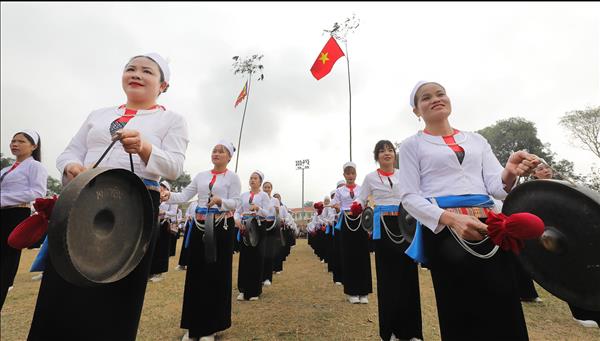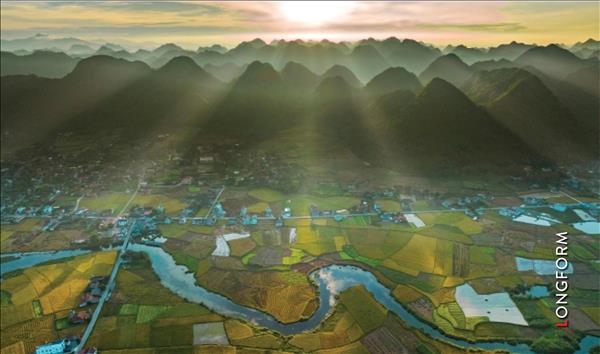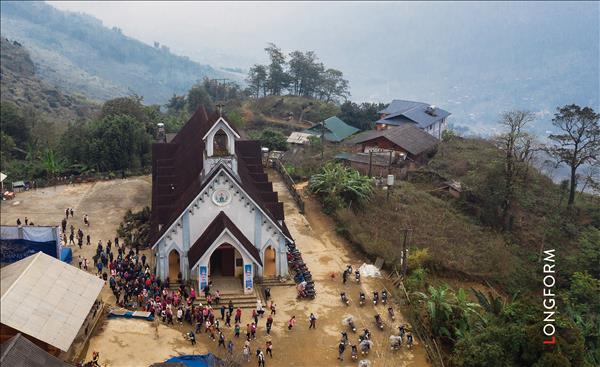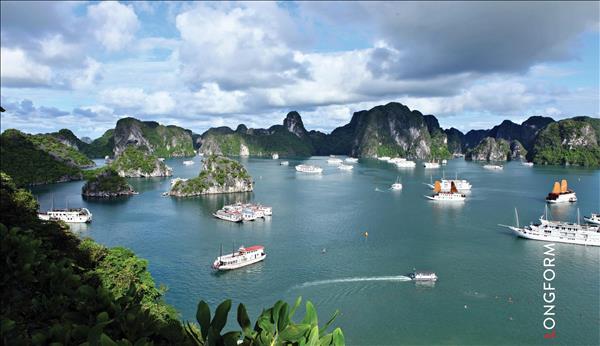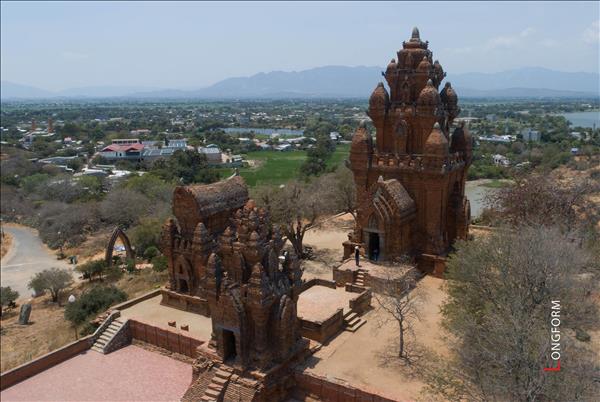Farmers’ lives are seriously affected by drought and saltwater intrusion
Every March a few years ago, farmers in the Mekong Delta prepared for harvesting the spring-winter rice crop. However, this year’s crop has been damaged by a long and intense drought and saline intrusion which also seriously affect the locals’ lives and the family of Truong Quoc Thanh is an example.
Six years ago, the family of Thanh, a native of An Giang, leased 20ha of land for rice farming in Kien Thanh Hamlet, Kien Binh Commune, Kien Luong District, Kien Giang Province. His family had bumper crops and had high profits for five years but this year his paddies might be lost and his family will become penniless for sure. At the time when rice seedlings were going to sprout grains, they suffered the prolonged drought and then saline intrusion, thereby becoming faded and withered.
Thanh said sadly: “There is water in the canals but I did not dare pump it into the fields because the water is salty that will make rice seedlings die more quickly”. With every passing day, more and more rice dies and his 20ha paddy is at risk of being wiped out completely.
According to experts, the rainy season of 2015 came late and ended early, whereas the dry season lasted a long time which led to a considerable decrease in the reserved water source, not providing sufficient water for production and daily use. The construction of many hydroelectric works on the Mekong River upstream by some countries and their increase of water reservation is the reason that reduced half of the fresh water to the Mekong River downstream. Furthermore, the sea level rising as a result of the El Nino phenomenon which has encroached and eroded coastal areas causes saline intrusion. It is the “combined effects” promoted by the phenomena that make the residents to struggle against drought and saline intrusion.
This year, saltwater intrusion has appeared two months earlier and has spread more widely and deeply into the system of major rivers in the western area, including the Tien River, Hau River, Vam Co River and Cai Lon River. In some areas, saltwater has intruded upstream 70-90km into the mainland, 20-30km deeper than previous years, and salinity rates are measured at 8-9%o at some main river estuaries.
Kien Giang, Bac Lieu and Ca Mau are the provinces hardest hit by the combined effects. The salinity intrusion in Kien Giang Province alone is severe and more difficult to counter because this province borders the West Sea and the Cai Lon River. Although the farmers in the districts of Kien Luong, An Bien, An Minh, Vinh Thuan and U Minh Thuong strived to rescue the rice by any means, they failed. Despite replacing dead rice 3-4 times, farmer Nguyen Van Phuong in Ca Chanh Hamlet, Phong Dong Commune, Vinh Thuan District was unable to rescue his paddies because of the shortage of fresh water. Seeing rice seedlings gradually dying he could not hold in his feelings of sadness.
The salinisation which reduces the amount of fresh water in many areas and the prolonged drought which makes the underground water source become exhausted, seriously affect the locals’ lives. The residents in the districts of An Bien, An Minh and Kien Luong in Kien Giang Province are facing tremendous difficulties caused by the shortage of fresh and clean water. In many areas, they have to drill wells, 90m in depth, to get fresh water.
In Ben Tre Province, 160 out of 164 communes lack fresh water caused by drought and saltwater intrusion. They have to save fresh water in different ways, such as bathing with alum water before using a little amount of rain water stored from the previous rainy season. Therefore, never before have the residents in the Cuu Long Delta been obsessed by the shortage of fresh water like present days.
Long-term resolutions
It is predicted that the situation will be worse in late May and probably last to early June, so drought and saline intrusion prevention is a pressing issue.
In March, Party General Secretary Nguyen Phu Trong paid a visit to the provinces in the Cuu Long Delta to inspect, encourage the locals and look for solutions to help the province to cope with drought and saline intrusion. The Prime Minister instructed ministries, sectors and localities to implement a number of measures to cope with the issue and considered it an extremely serious mission of the whole political system.
In the short term, to deal with the ongoing drought and salinisation in the Cuu Long Delta and the most serious drought in the southern area of the Central and the Central Highlands, the Ministry of Agriculture and Rural Development called on international organisations to assist and offer emergency humanitarian aid to the residents in affected areas; build contemporary dams and culverts, dig ponds and lakes and transport fresh water to ensure a water supply for production and daily use.
In the long term, the Government decided to switch to suitable crops; diversify and develop drought and salt resistant plants; do research to create varieties of plants; upgrade the technical infrastructure; and shift economic structure and production and the living habits of locals in coastal areas to adapt to the sea water rising. It also has called on countries to sustainably use the Mekong River’s water resources and international organisations to fund ODA projects on construction and enhancing management’s ability to cope with drought and salinisation.
In a long-term response to drought and salinisation, the Cuu Long Delta Rice Research Institute has focused on research of drought and salinity-tolerant rice genetic resources. The institute has so far successfully created some rice varieties with a capacity of resisting the salinity rate of 3-4%o which are now grown on an experimental scale.
The localities in the province are now diversifying plants which are capable of adapting to drought and salinity. For example, the farmers in Tan Phu Dong Islet in Tien Giang Province successfully shifted to lemongrass because of the farming land being seriously affected by salt water, opening a direction for local economic development.
It is expected that with short and long term resolutions, the Cuu Long Delta will overcome difficulties to lead the country in rice production and fisheries, making a contribution to ensure the food security of the country.
Every March a few years ago, farmers in the Mekong Delta prepared for harvesting the spring-winter rice crop. However, this year’s crop has been damaged by a long and intense drought and saline intrusion which also seriously affect the locals’ lives and the family of Truong Quoc Thanh is an example.
Six years ago, the family of Thanh, a native of An Giang, leased 20ha of land for rice farming in Kien Thanh Hamlet, Kien Binh Commune, Kien Luong District, Kien Giang Province. His family had bumper crops and had high profits for five years but this year his paddies might be lost and his family will become penniless for sure. At the time when rice seedlings were going to sprout grains, they suffered the prolonged drought and then saline intrusion, thereby becoming faded and withered.
Thanh said sadly: “There is water in the canals but I did not dare pump it into the fields because the water is salty that will make rice seedlings die more quickly”. With every passing day, more and more rice dies and his 20ha paddy is at risk of being wiped out completely.
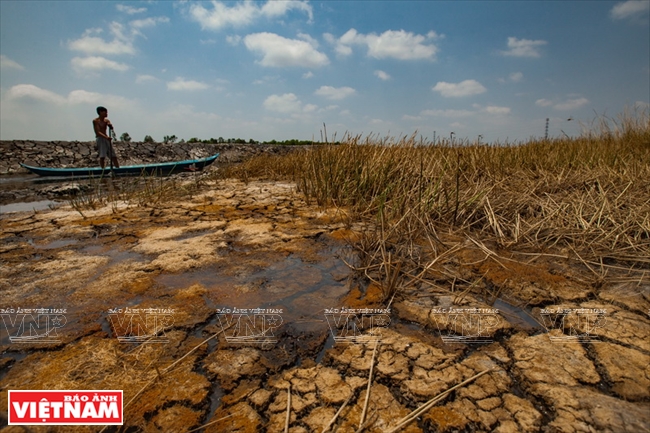 By mid March, all 13 provinces in the Mekong Delta were seriously affected by the most severe drought and saltwater intrusion in the past 100 years. In the photo: The saltwater intrudes the paddy of Nguyen Van Phuong (Ca Chanh Hamlet, Phong Dong Commune, Vinh Thuan District, Kien Giang Province). Photo: Nguyen Luan/VNP  The most severe drought and saltwater intrusion in the past 100 years.. Photo: Nguyen Luan/VNP 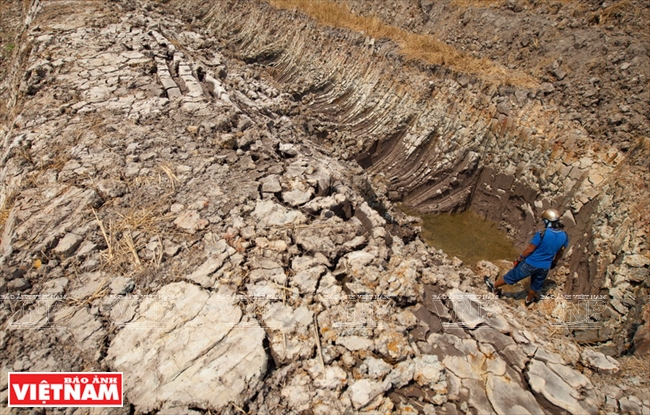 The drained ditch system in Hoa Phuoc Hamlet (Thach Loc Commune, Chau Thanh District, Kien Giang Province) is also dry and trapped. Photo: Nguyen Luan/VNP 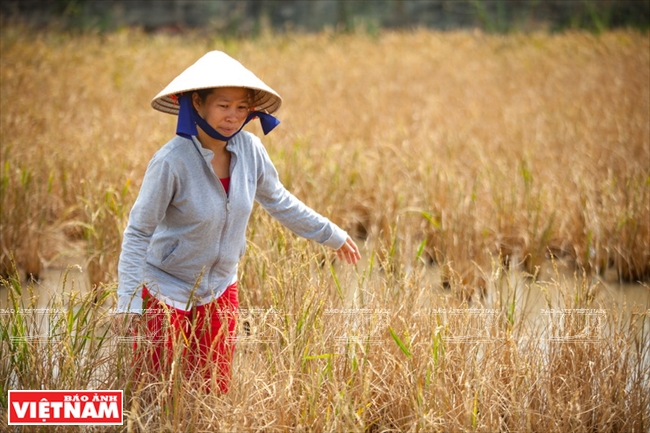 Tran Thi Chau, a farmer in Rach Gia City, Kien Giang Province, on her field which is totally damaged by drought and saltwater intrusion. Photo: Nguyen Luan/VNP 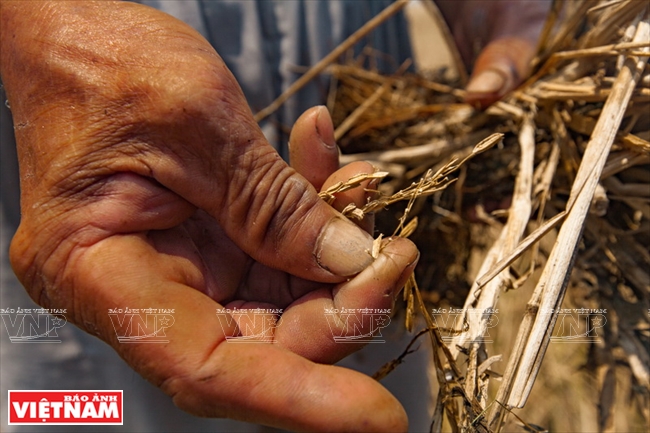 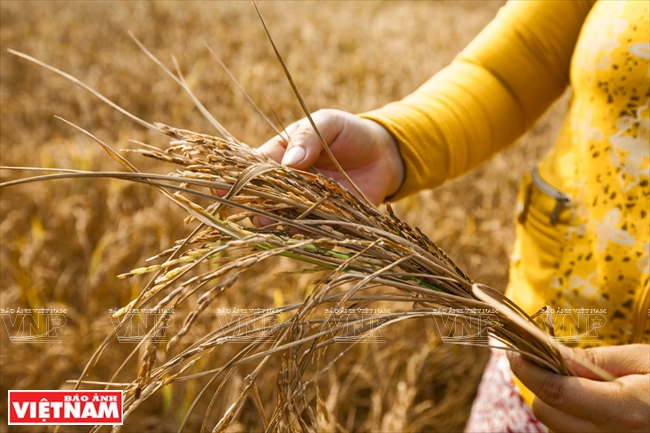 Drought and saltwater intrusion take place during the time the rice plants are ready to sprout grains . Lack of fresh water prevents the grain’s growth and leads to poor productivity. Photo: Nguyen Luan/VNP 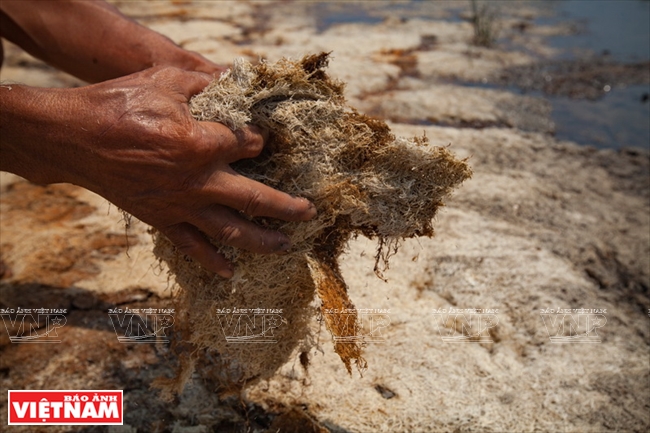 Nguyen Van Phuong, a farmer in Ca Chanh Hamlet, Phong Dong Commune, Vinh Thuan District, Kien Giang Province, collects clumps of salt in his field. Photo: Nguyen Luan/VNP 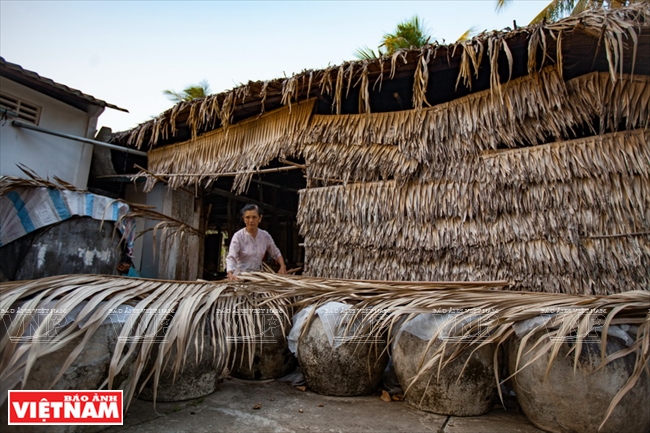 Farmers in Mo Cay Nam District (Ben Tre) have to use rainwater stored from the previous rainy season. Photo: Nguyen Luan/VNP 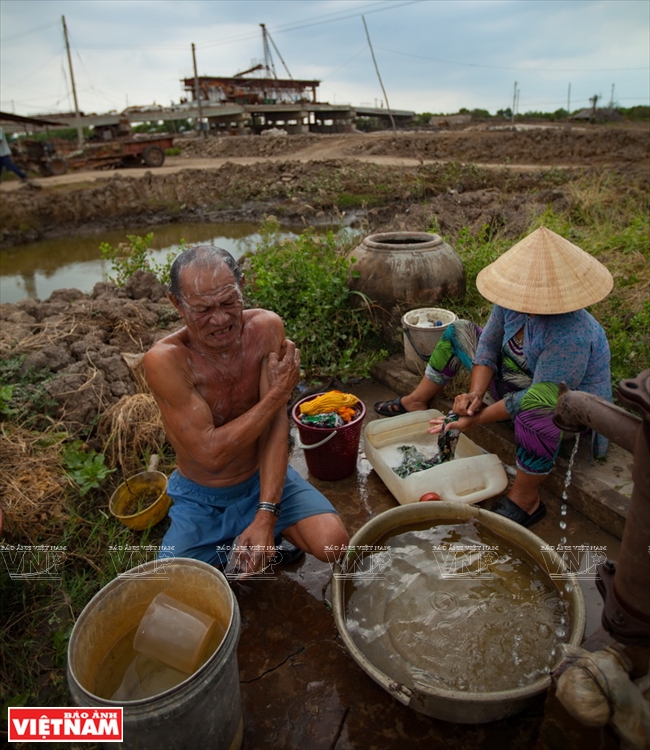 Nguyen Van Tu (Xeo Quao A Hamlet, Nam Thai Commune, An Bien District, Kien Giang Province) has to dig up to 90m under the ground to seek fresh water. Photo: Nguyen Luan/VNP 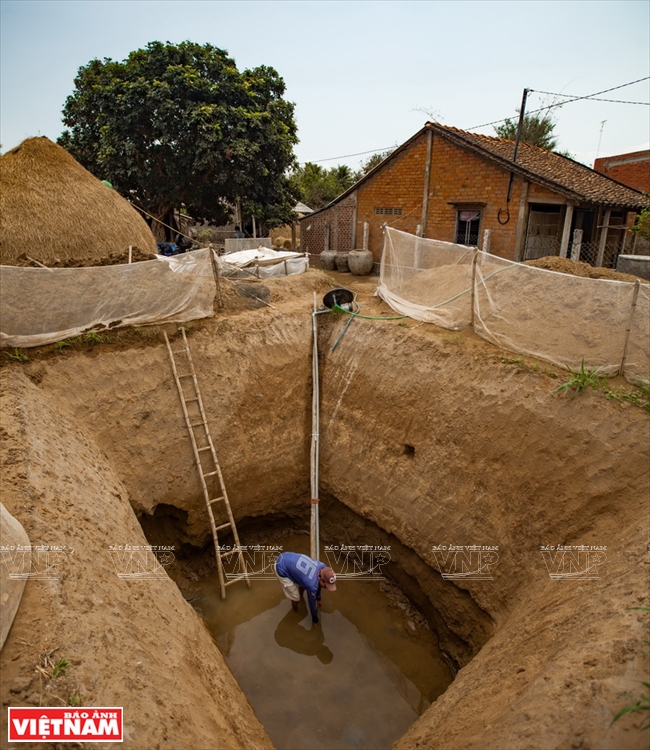 Locals in Hamlet No. 5, An Hiep Commune, Ba Tri District, Ben Tre Province have to dig a large well to seek a source of fresh water. Photo: Nguyen Luan/VNP 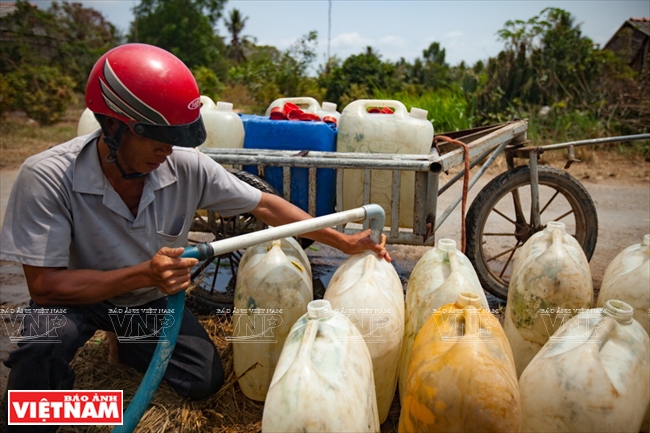 Le Cong Trinh (Hamlet No. 8, An Hiep Commune, Ba Tri District, Ben Tre Province) pumps fresh water from a well into cans to use or sell to other people. Photo: Nguyen Luan/VNP |
| The Cuu Long (Mekong) Delta accounts for 55.5% of rice output, 70% of fruit and 69% of aquatic production of the whole country. According to the Ministry of Agriculture and Rural Development, up to middle-March, 2016 the 13 provinces of the Mekong Delta were seriously affected by drought and salinisation , including 54,000ha in Kien Giang; 49,343ha in Ca Mau; 19,541ha in Ben Tre; 13,274ha in Tien Giang; 12,344ha in Tra Vinh; 11,456ha in Bac Lieu; 9,505ha in Soc Trang; 8,651ha in Long An; and 1,203ha in Hau Giang. |
This year, saltwater intrusion has appeared two months earlier and has spread more widely and deeply into the system of major rivers in the western area, including the Tien River, Hau River, Vam Co River and Cai Lon River. In some areas, saltwater has intruded upstream 70-90km into the mainland, 20-30km deeper than previous years, and salinity rates are measured at 8-9%o at some main river estuaries.
Kien Giang, Bac Lieu and Ca Mau are the provinces hardest hit by the combined effects. The salinity intrusion in Kien Giang Province alone is severe and more difficult to counter because this province borders the West Sea and the Cai Lon River. Although the farmers in the districts of Kien Luong, An Bien, An Minh, Vinh Thuan and U Minh Thuong strived to rescue the rice by any means, they failed. Despite replacing dead rice 3-4 times, farmer Nguyen Van Phuong in Ca Chanh Hamlet, Phong Dong Commune, Vinh Thuan District was unable to rescue his paddies because of the shortage of fresh water. Seeing rice seedlings gradually dying he could not hold in his feelings of sadness.
The salinisation which reduces the amount of fresh water in many areas and the prolonged drought which makes the underground water source become exhausted, seriously affect the locals’ lives. The residents in the districts of An Bien, An Minh and Kien Luong in Kien Giang Province are facing tremendous difficulties caused by the shortage of fresh and clean water. In many areas, they have to drill wells, 90m in depth, to get fresh water.
In Ben Tre Province, 160 out of 164 communes lack fresh water caused by drought and saltwater intrusion. They have to save fresh water in different ways, such as bathing with alum water before using a little amount of rain water stored from the previous rainy season. Therefore, never before have the residents in the Cuu Long Delta been obsessed by the shortage of fresh water like present days.
Long-term resolutions
|
According to Deputy Minister of Natural Resources and the Environment Tran Hong Ha, the main reason for the most severe drought and saline intrusion raging in the Cuu Long Delta lies on the Mekong River upstream.
At present, Chinese reservoirs on the Mekong River upstream, are capable of containing 23 billion m3 of water, and those on the river branches, of 20 billion m3. The total capacity of these reservoirs has great impact on regulating water and the flow to the river downstream. During the Tet festival in China, the demand for energy decreased so they reserved water, resulting in a considerable decrease of water that then increased when they released water from reservoirs for hydroelectric plants. "I am sure that is the basic reason," said the deputy minister. (Source: Tuoi Tre Newspaper) |
In March, Party General Secretary Nguyen Phu Trong paid a visit to the provinces in the Cuu Long Delta to inspect, encourage the locals and look for solutions to help the province to cope with drought and saline intrusion. The Prime Minister instructed ministries, sectors and localities to implement a number of measures to cope with the issue and considered it an extremely serious mission of the whole political system.
In the short term, to deal with the ongoing drought and salinisation in the Cuu Long Delta and the most serious drought in the southern area of the Central and the Central Highlands, the Ministry of Agriculture and Rural Development called on international organisations to assist and offer emergency humanitarian aid to the residents in affected areas; build contemporary dams and culverts, dig ponds and lakes and transport fresh water to ensure a water supply for production and daily use.
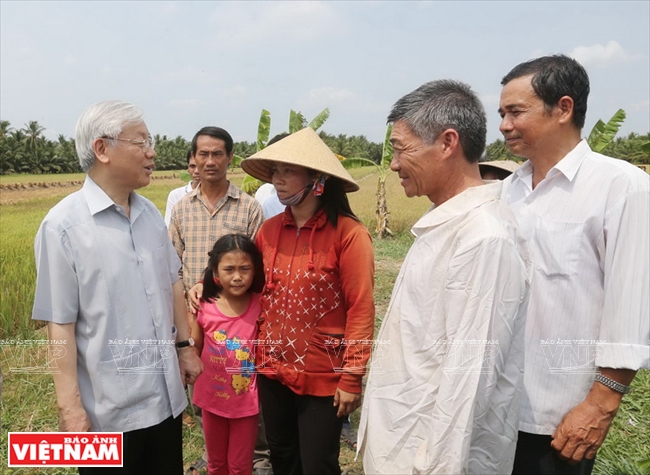 On March 17, 2016, Party General Secretary Nguyen Phu Trong met farmers in the field affected by saltwater in Tan Thanh Commune, Giong Trom District, Ben Tre Province. Photo: Tri Dung/VNA 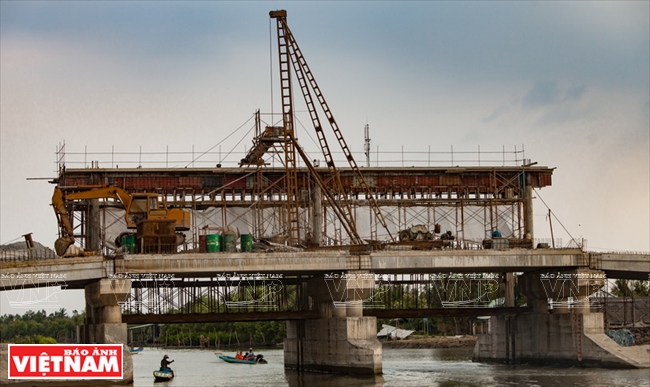 A saltwater preventing aqueduct is being promptly quickly built in Nam Thai A Commune, An Bien District, Kien Giang Province. Photo: Nguyen Luan/VNP 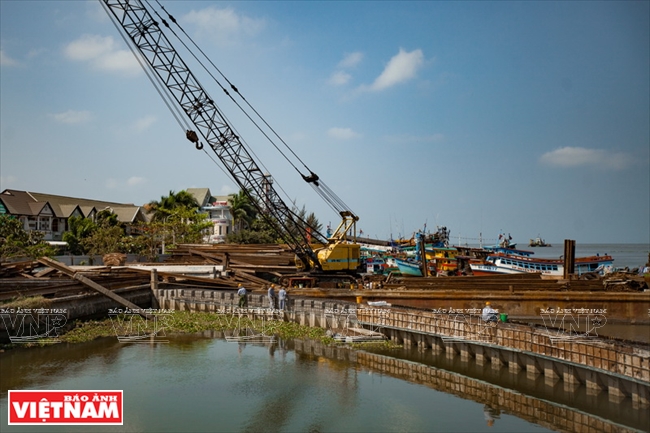 A system of aqueducts in Kien River in Rach Gia City, Kien Giang Province, is being hastily completed. Photo: Nguyen Luan/VNP 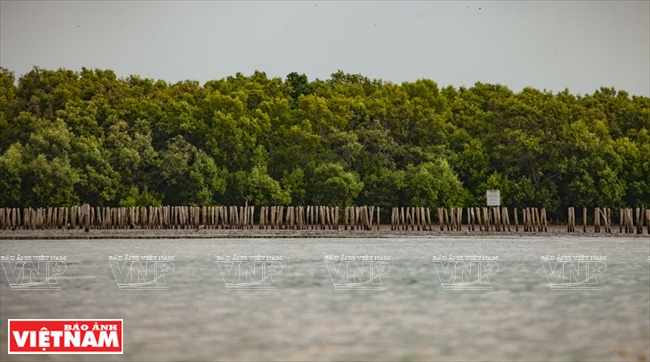 Wood poles used as wave breakers and protection forest served in erosion prevention in the coastal district of An Minh, Kien Giang Province. Photo: Nguyen Luan/VNP 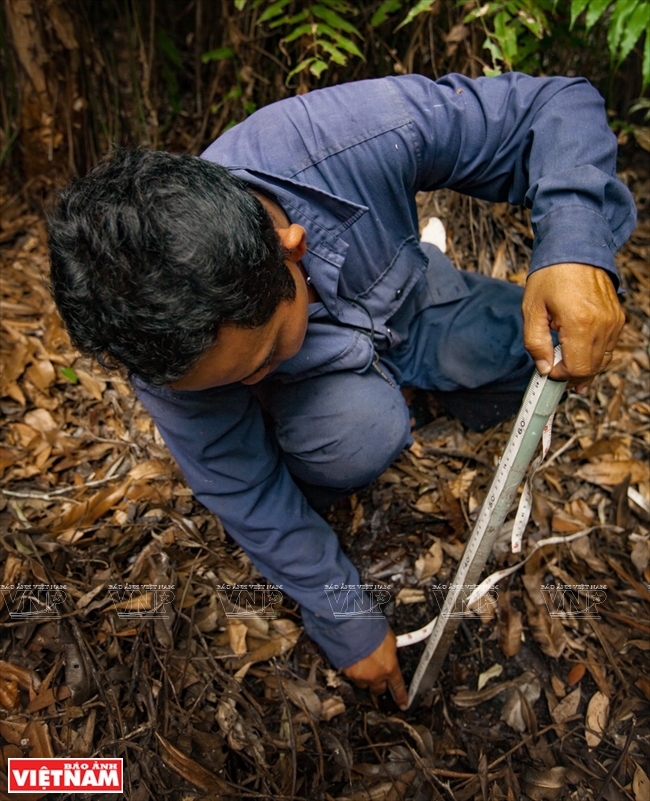 An officer of the managing board of U Minh Thuong National Forest measures the amount of underground water for the prevention of wildfires. Photo: Nguyen Luan/VNP  A farmer in Mo Cay Nam District, Ben Tre Province digs a deep well to find fresh water source. Photo: Nguyen Luan/VNP 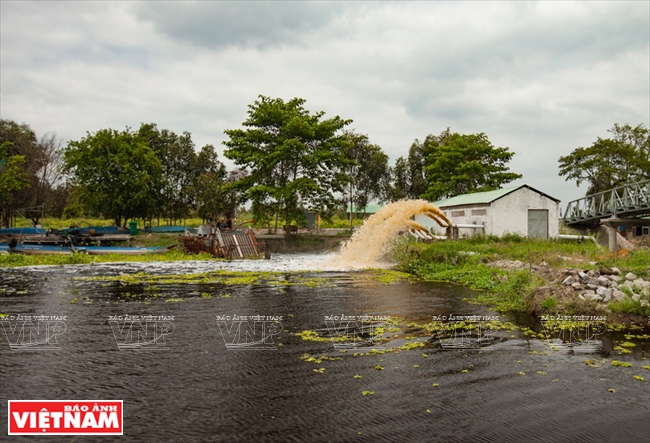 A system of pumpers is used to adjust the amount of water in U Minh Thuong National Forest in order to protect the forest from wildfire. Photo: Nguyen Luan/VNP 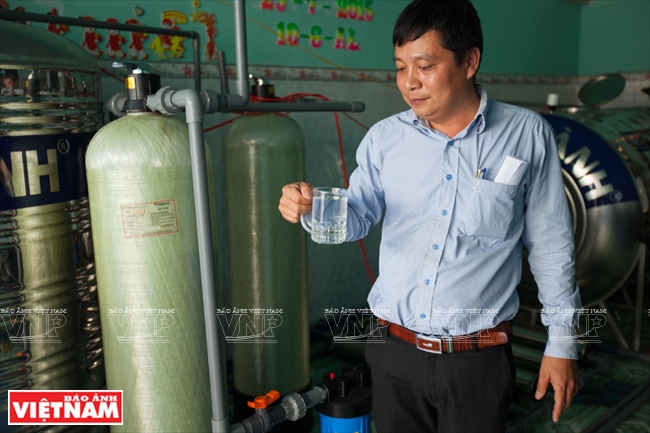 Some families in Mo Cay Nam District invest in assembling the water filter system to serve themselves and the locals. Photo: Nguyen Luan/VNP 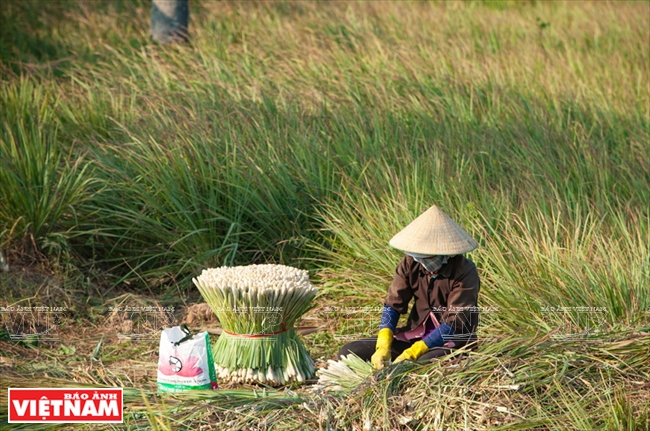 Growing lemongrass instead of rice leads to high economic value in Tan Phu Dong Islet, Tien Giang Province. Photo: Nguyen Luan/VNP 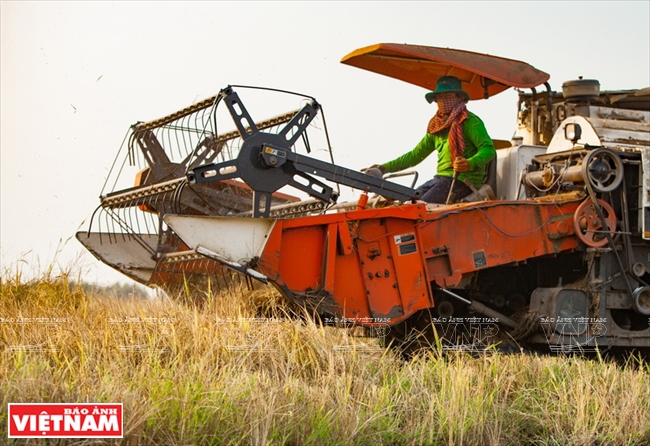 Farmers have to harvest rice early for the serious saltwater intrusion. Photo: Nguyen Luan/VNP |
| From the Tibetan Plateau at a height of 5,000m, the Mekong River runs through China's Yunnan province, Myanmar, Laos, Thailand, Cambodia and Vietnam. The Cuu Long Delta is in the Mekong River’s downstream so the construction of hydroelectric dams on the main stream of the river is the major reason causing erosion and ecological imbalance and affecting the lives of farmers and fishermen in the Mekong River’s downstream. According to scientists, the Cuu Long Delta will lose 600,000tonnes of aquatic product and 224,000tonnes of agricultural product/year. The total loss of agricultural and fishery sectors is about 5,200 billion dong, accounting for 2.3% of the region’s GDP. |
In a long-term response to drought and salinisation, the Cuu Long Delta Rice Research Institute has focused on research of drought and salinity-tolerant rice genetic resources. The institute has so far successfully created some rice varieties with a capacity of resisting the salinity rate of 3-4%o which are now grown on an experimental scale.
The localities in the province are now diversifying plants which are capable of adapting to drought and salinity. For example, the farmers in Tan Phu Dong Islet in Tien Giang Province successfully shifted to lemongrass because of the farming land being seriously affected by salt water, opening a direction for local economic development.
It is expected that with short and long term resolutions, the Cuu Long Delta will overcome difficulties to lead the country in rice production and fisheries, making a contribution to ensure the food security of the country.
|
(Source: Vnexpress) |
Story: Son Nghia - Photos: Nguyen Luan

